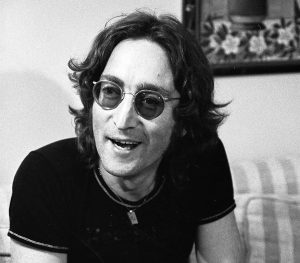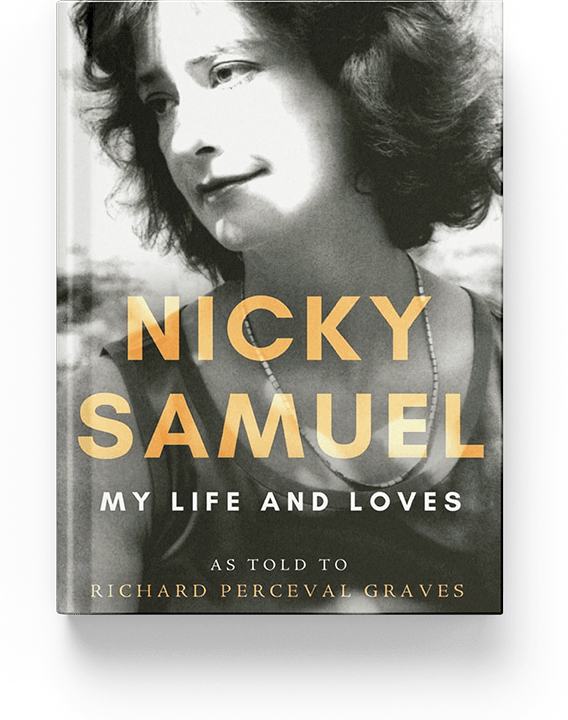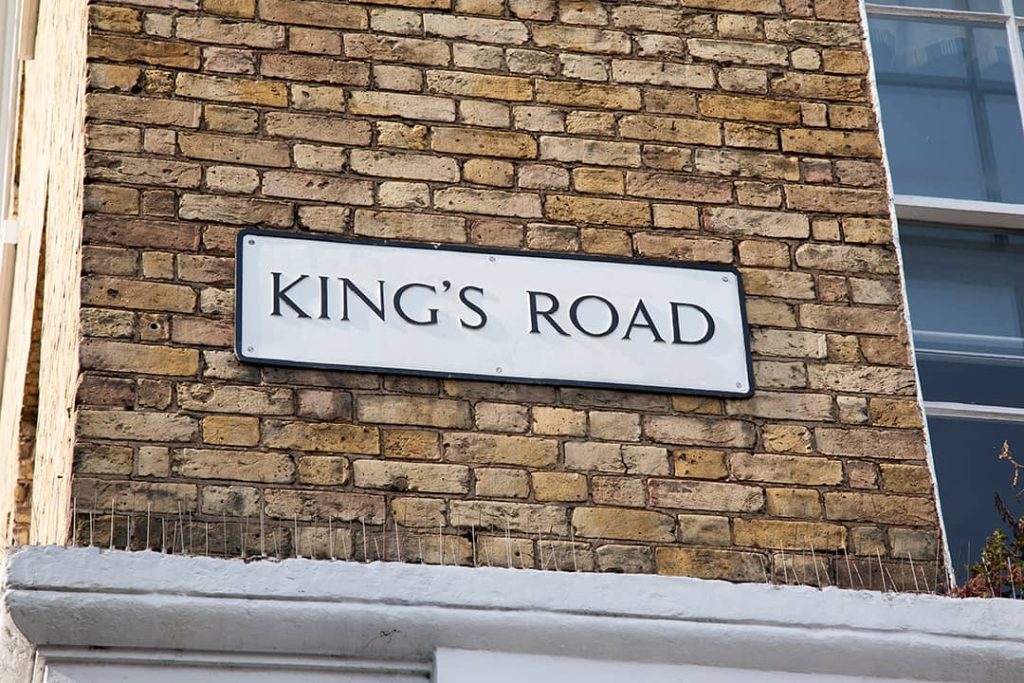

Fashionable London Street
The King’s Road
Just shy of two miles long, the well-known King’s Road in London starts at Sloane Square in Belgravia and makes its way south-westward through the Borough of Chelsea.
Although the earliest surviving written records of the area date back to 785, the name ‘Chelsea’ as we know it today was first used in the 18th century. In 785, it was mostly meadow and pastureland. It was only much later, in the 1520s, when Sir Thomas More, King Henry VIII’s advisor, bought a vast expanse of the land on which to build a house that the area began to become recognised.
In those days, there was no modern surfaced road through the area, just a track that was used mainly by farmers. From 1536 Henry VIII used it on his way to his newly built manor house in the area of what is now Cheyne Walk. His use of the track was exclusive, and it became known as ‘The King’s private road’.
Charles II, who reigned from 1660 to 1685,) transformed the King’s road to a gravelled carriageway, and frequently used the road to make trips between his palaces at Hampton Court and Whitehall.
His successor George I (1714 to 1727) did his best to restrict use of the road to the gentry (despite the best efforts of Sir Hans Sloane who had purchased the Manor of Chelsea back in 1712) and by 1722 there were three toll houses. In order to pass one of these, the user needed a specific token made of copper. These tokens were debossed with the words ‘The King’s Private Road’ on one side and the King’s monogram on the other.
However, access progressively widened, and by the 1780s the road was open to most commoners. And then in 1820 ownership of the road was transferred from the Crown to the Parish and became more of a general highway.
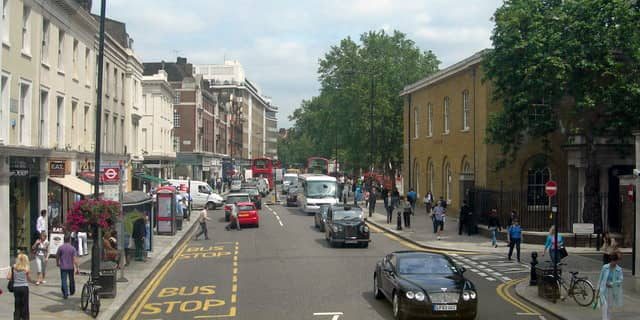
From 1855, when the new Borough Cemetery opened, it was renamed ‘Cemetery Road’; but then in 1911, to honour the coronation of George V, it became once again The King’s Road. By this time, although much of the landscape had remained in its original rural state until Victorian times, urbanisation during the late 19th century had seen mass development of the area with numerous new buildings.
The period after World War II (1939-1945), saw considerable redevelopment, with property prices (predominantly at the north-east end of the road) rising at an alarming rate. The typical cost of a shop in 1950 was £4,500; by 1967, this had risen to £30,000, and by 1969, to a staggering £45,000.
These sharp increases during the 60s were no doubt due to the increasingly popularity of the road and reputation it had gained as the centre of ‘Swinging London’. The trigger of this wave of attention was in 1955 when fashion designer Mary Quant (1930 – 2023) opened her boutique shop Bazaar with her husband Alexander Plunkett Green at 138a King’s Road, Chelsea.
The opening of her shop paved the way for the bohemian King’s Road that the generation of the day was craving. Bazaar offered a new way to shop, which included her own designs, and other accessories designed by friends that she had made at Goldsmiths, all to the backdrop of jazz music that was played on repeat. The restaurant downstairs offered an infinitely cool place for people to meet in order to take a break from their shopping.
Quant’s influence only increased in 1965 with her introduction of the mini-skirt, a bold fashion statement that allowed women to be free and expressive, and perfectly captured the prevailing atmosphere.
Further boutiques and brands had followed in her footsteps; and soon there was a vast array of fashion shops that lined the road, taking over from the previous more practically oriented and mundane shops that had existed.
The King’s Road was reborn, and had become the place to be not only for the young, famous and wealthy but also for many others craving a part of its hippy lifestyle.
Other popular boutiques on The King’s Road would include Granny Takes a Trip, Dandie Fashions, Top Gear and Countdown.
Granny Takes a Trip was opened in 1966 by designer and artist Nigel Waymouth, his girlfriend Shelia Cohen and Saville Row-trained tailor John Pearse. Entering the shop was a feast for the eyes, from the rails of exuberant clothing to the extravagantly decorated walls and furnishings.
Dandie Fashions at number 161 was a joint venture between fashion entrepreneur Freddie Hornik (1944 – 2009), Alan Holston, Australian fashion designer John Crittle (1943 – 2000), Guinness heir Tara Browne (1945 – 1966) and fashion entrepreneur Neil Winterbotham. Regulars included David Bowie, The Who, Jimi Hendrix and The Beatles, who later went on to invest in the shop, renaming it ‘Apple Tailoring’. Dandies sold clothes that were extravagant, used rich materials such as silk and velvet or loud patterns, and were designed in the style typical of the time. Hendrix was a particular fan of a type of velvet or patterned jacket, and many of the examples that he purchased here are now housed in museums as part of their collections.
Fashion designer, milliner and fashion photographer James Wedge and his girlfriend model, photographer and author, Pat Booth (1943 – 2009) were behind both Top Gear and later also Countdown, whose clientele included The Rolling Stones, The Beatles and Marianne Faithfull. It’s said that Wedge preferred the area to Carnaby Street.
The road attracted many visitors, and was an especially vibrant and bustling place to be on a Saturday. It was a place for creatives to explore and to push boundaries, and this would continue through the 70s with the opening of Let it Rock, the shop owned jointly by fashion designer Vivienne Westwood (1941 – 2022) and Sex Pistols manager Malcolm McLaren’s (1946 – 2010).
The reputation of the road remains high, although it is has become more upmarket than it was under the influence of the swinging and bohemian vibes of the 60s. Today, fashion boutiques still line the road, but their offerings are considerably more expensive than they were back in those heady days of the 1960s and 1970s.
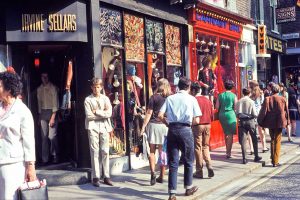
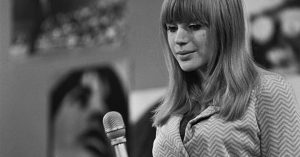
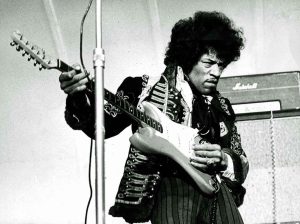

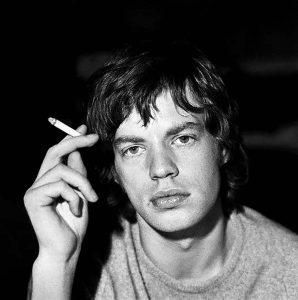
![nicky-samuel Portrait photograph of Nicky Samuel Waymouth [date unknown]](https://www.theswinging60s.com/wp-content/uploads/2021/06/nicky-samuel-300x198.jpg)
